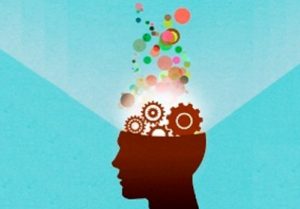Making Sense of Your Life to Empower Your Future
 What could be more important and empowering than making sense of your story? Research demonstrates that creating a coherent narrative of your early life frees you to be the author of your future. When we fail to make sense of the past, we are often trapped in it, reliving old hurts over and over again. Creating a coherent narrative provides you with the keys to unlock stubborn destructive patterns in your relationships, from whom you select to the dynamics that are created. The self-knowledge gained makes you aware of your triggers, and this allows you to be a better parent, a better partner, and a better person.
What could be more important and empowering than making sense of your story? Research demonstrates that creating a coherent narrative of your early life frees you to be the author of your future. When we fail to make sense of the past, we are often trapped in it, reliving old hurts over and over again. Creating a coherent narrative provides you with the keys to unlock stubborn destructive patterns in your relationships, from whom you select to the dynamics that are created. The self-knowledge gained makes you aware of your triggers, and this allows you to be a better parent, a better partner, and a better person.
On a structural level, creating a coherent narrative creates more integration in your brain as well as your relationships. The process draws on different brain regions and requires that they work together, thereby creating better connections and communication.
The first step in creating a coherent narrative involves reflecting on our childhoods in a novel way. The tool I have found most helpful for doing this is the Adult Attachment Interview, developed by Mary Main and her colleagues at University of California, Berkeley. This interview requires you to think about your childhood from a different perspective.
My colleague Dan Siegel and I have elaborated on this process, creating a series of role- plays and descriptions of the various attachment styles. We have described how these styles become internalized as expectations about the ways we will be treated by others as well as the types of responses we will elicit from them. We have also developed a series of exercises and techniques one can use to write a coherent narrative and create more inner security. These include methods for accessing any unresolved traumas, big or small, and making sense of them, so they don’t haunt you or replay in your adult life. Research has demonstrated that it is unresolved trauma the causes problems in our parenting and in our relationships with those closest to us.
I became increasingly fascinated by the method of creating a coherent narrative after observing how it impacted a group I ran as a pilot study to determine how the process could go. I saw the impact on the members as they uncovered and made sense of incidents, both dramatic and non-dramatic, that had impacted them in how they perceived themselves, other people, and the world. I saw them grow personally from addressing these issues and from receiving feedback from the group. Many of them overcame long-standing negative views of themselves encapsulated in events from their childhood. Several gained control of “triggers” that in the past, when encountered, would have sent them reeling. This was an emotion-filled powerful process.
Later, I began teaching this approach to professionals in various continuing education settings. I found that even seasoned professional therapists who had been involved in psychotherapy themselves, gained new insights and made new connections while completing the exercises. This reinforced my belief in the power and value of working through the creation of a coherent narrative of one’s early life experiences.
When my colleagues and I conduct these seminars, we also teach a toolkit of skills for managing the strong emotions that can arise when delving into one’s past. These include several breathing exercises, a number of simple meditations, and the RAIN approach to dealing with difficult emotions. The R stands for recognize, the A for accept, allow, acknowledge, the I for investigate, and N for not over-identifying with the difficult thoughts or feelings, not being defined by them. When in the I phase, we suggest SIFTing through one’s mind, looking for any sensations, images, feelings or thoughts, in a kind way toward oneself. When doing this SIFTing, a person often has memories that arise which make sense of the content and intensity of the painful feelings they were experiencing; this offers a great deal of relief and self-understanding. The toolkit can be a valuable asset in many situations when a person is facing strong emotional reactions throughout their life.
Once you have identified your attachment pattern, and there may be different ones for the different significant relationships in your early life, you can engage in activities to develop the parts of you that may have not been fully developed or integrated. This process, in conjunction with creating a coherent narrative, allows you to develop more inner security and to be happier in all your relationships, particularly those with the people you love the most. It also allows you to know yourself and to understand, on a deeper level, what has shaped you. This self-knowledge, in turn, frees you to make choices about your future with insight into who you are and who you want to become.









